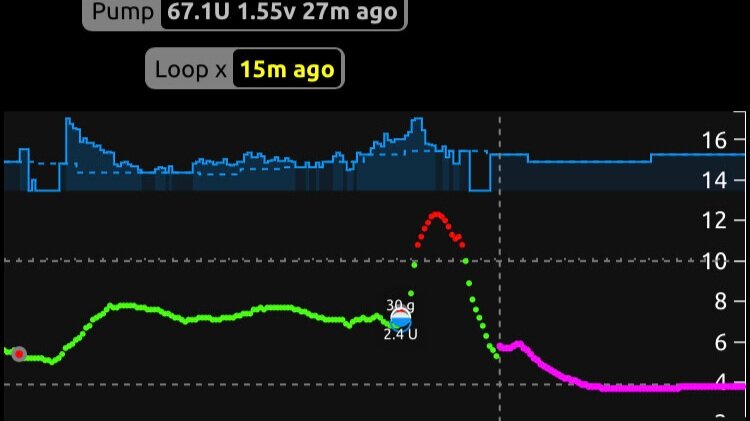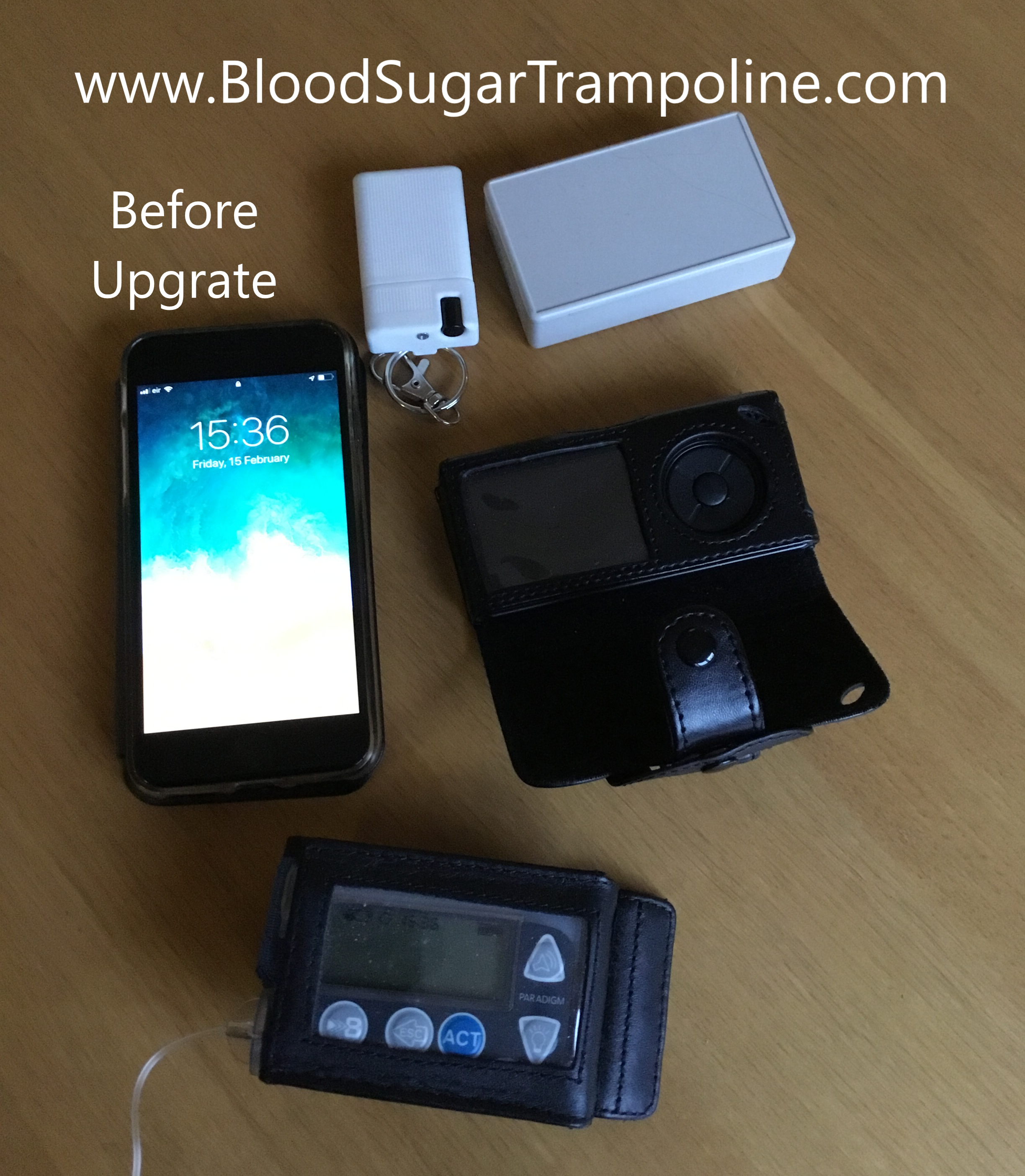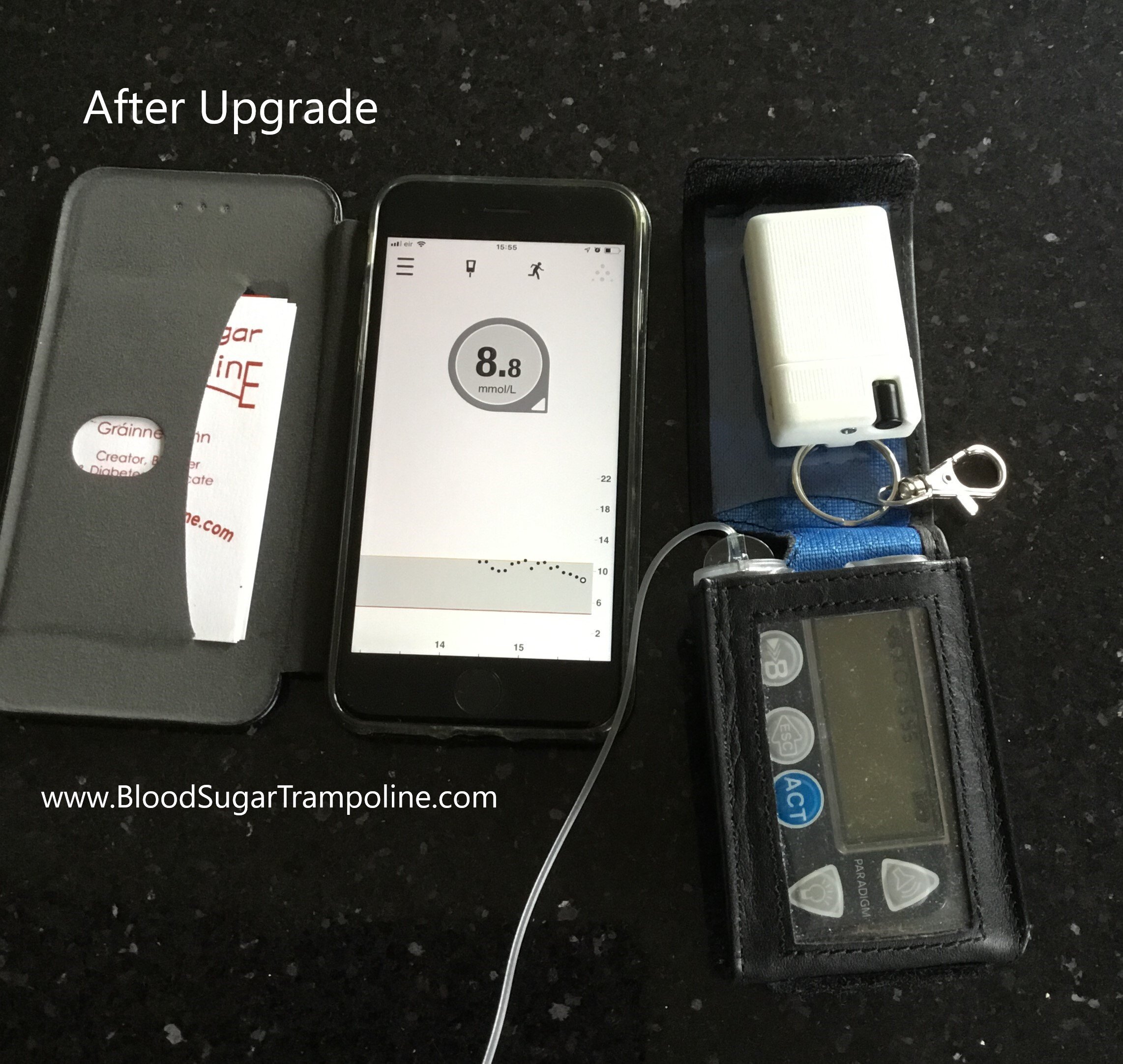My journey towards a closed loop artificial pancreas system began in earnest eighteen months ago. It hasn’t been a straight forward journey but I’m happy to report that it is going relatively OK and decided to share.
The first thing I want to point out is that I believe that building your own automatic insulin delivery system is not for everyone, especially in a country where insulin pumps are like gold dust, but I do believe that the few of us that do have this option have a really important role to play in making an approved option available for everyone who wants better and to encourage others to have the conversation about why people are turning to an unapproved, unregulated automatic insulin delivery system.
Here’s my journey so far.
October 2017 Change can be difficult
I had heard about and had been following the Do-It-Yourself artificial pancreas system APS and the #WeAreNotWaiting for a number of years but I really only got seriously interested in it in October 2017 when I saw it up close and personal. I still wasn’t interested enough to commit but then when my insulin pump manufacturer announced in late 2017 that it was pulling out of the diabetes market, I was faced with choosing a different pump. However, at that time there were only two insulin pumps available in Ireland, neither of which had me “wowed”, so I thought why not look into this DIY Closed loop system a bit more.
Summer 2018 Committed
By summer 2018, after I did a lot of reading, examined my options for alternative insulin pumps thoroughly, spoke to my beloved about his help, to which he replied “Hell yeah”, my commitment to becoming a Looper was confirmed. I wrote a little bit more about why I chose DIY in this blog post but I feel that the biggest reason then was that I was completely fed up of nights interrupted with sensor alarms and living on a blood sugar trampoline. I also explain what exactly DIY Diabetes Technology is and the different types in the same post: “Why Would Anyone DIY Diabetes”
Next, I had to find all the devices I needed. My existing pump at that time was linked to my glucose sensor, meaning that my glucose data was displayed on my pump screen and nowhere else. The first thing I had to get was a receiver for my cgm to display my glucose information, which is funded by my health service (very grateful). I also needed an old pump, also provided by my health service (even more grateful) and lastly, or so I thought, I had to buy a RileyLink which would act as a “translator” that “helps get information to/from your pump by radio communications, and to/from your iPhone using Bluetooth” (the pump needs communications in radio form, and the iPhone needs communications in Bluetooth form) - source Loop Docs
September to December 2018 The Set Up
Once I had all my hardware, my beloved went about setting up the software and a little bit of soldering. He tells me that I would’ve been able to do this but I have serious doubts because I couldn’t even figure out what set up guide to begin with. The one closest to what I had was the Medtronic + Dexcom G4 + share, I knew I didn’t have the “Share” capability but beloved said let’s do it and see how far we get. Quite a ways actually. We then asked the DIY online community for a solution to not have the component that allows the cgm to send information to the RileyLink which they provided and another piece of hardware was ordered.
This was the first serious stumbling block though the work around involved another little box to carry plus another App to figure out. Then, I learned that most of the problem solving would require me to have yet another App. So here I was with 3 Apps running my phone battery down and with 3 extra devices to carry around all of the time. My pockets were jammed. I was beginning to wonder was this all going to be worth it.
December 2018 Go Live
In December last, we went live on open loop for about a week before I closed it. Too impatient! It really didn’t go well but it felt so free being able to give my meal bolus from my phone. Especially since my frozen shoulder was making it painful to reach around to my hip to unclip and re-clip my insulin pump.
The real upsetter was when traveling to the US over the holidays and after my fourth low glucose of the flight I just decided to go back to open loop and leave it that way for the entire break.
January 2019 First Bump
Once we got back from the US, none of the components seem happy with each other and through trial and error we determined that our RileyLink was the rascal. True to this #WeAreNotWaiting community, a new RileyLink was dispatched.
March 2019 second Bump
(Thankfully, I have now upgraded to a G5 and the lack of share capability is no longer an issue).
By the time my new RileyLink arrived I had been upgraded to the Dexcom G5 and was able to remove another component that was messing with radio frequency and Bluetooth signals. So we gave it another go. The DIY closed loop was working fabulous at night with no high/low glucose alarms going off what-so-ever, however, I had an aversion to doing basal rate testing during the day so Loop was not doing well for my waking hours. I tried making adjustments to my insulin to carb and my insulin sensitivity ratios but it wasn’t working.
By April, I had developed a severe frozen shoulder and despite no cgm alarms was unable to sleep for months and in a lot of pain during the day. I really couldn’t find the headspace to figure out the problems with loop and when, in April, I had to manage two episodes of DKA over 48 hours determining that my very old pump was the culprit, I decided to go back to my old Animas pumps. I lost confidence in my capability to make a go of the Closed Loop too.
May 2019 Confidence Regained
The DIY Diabetes Technology event in UCD Dublin could not have come at a better time. I had received treatment for my shoulder and was starting to get some sleep and to be able to hear from DIY pioneers such as Dana Lewis, Katarina Bruane and many more, convince me to consider trying again. AND, through the event I was able to get a newer old Medtronic pump.
I set it up again and felt confident enough to do closed loop at night and open loop during the day. I decided to dig deep and deal with my anxiety over basal rate testing during the day and started with mornings.
Summer 2019 Have not looked back
On the 1 August 2019, when we were going on holiday, I decided to leave the loop closed that morning just to see how it did, I still haven’t switched it off and we are now in December! :-O So far, the only time I have switched Loop to open has been when I had a bad site and was heading towards DKA again, while we were on holiday.
Looping - Basal rates automatically adjusting to keep me in range while sleeping.
The future
In a nutshell, with a DIY system I have not yet fine tuned:
My highs are not so high and for less time
My lows are not so low and can mostly self correct
Sleep Soundly
Improved Time in Range
Weight Loss
Less insulin
Less work from me
I still don’t have it running perfectly with nice smooth lines and I still sometimes have nightmares hypos. But, my highs are not so high, my lows not so low and can, mostly correct themselves. I can, most days, achieve 85% to 95% time in range, a vast improvement from 65% to 75% I was achieving by constantly putting huge effort in with pump and CGM alone. I have also lost some weight because I was topping up with glucose to prevent lows and I’m not buying as many glucose tablets.
I do realize that I am so very privileged to have access to an insulin pump and a cgm so that I could take this leap, and that this road is not a road many will travel. However, I am excited when I hear about the progress that the Medtronic 670G and the Tandem T slim control Basal IQ insulin pumps are making in the closed loop world. I’m optimistic that we, in Ireland, will have more diabetes nurses and dietitians in the near future so that many more people with diabetes will have access to insulin pumps and CGMs and an approved fully closed loop technologies in the near future.
If you are in a position to explore #DIYPS ( Do-It-Yourself Pancreas System) find out more here.





